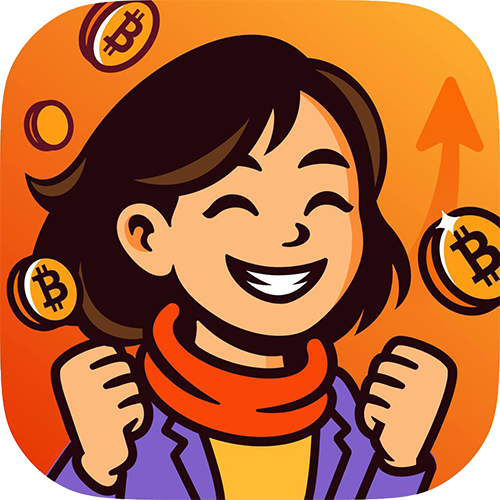Crypto Trading Terms Decoded: Your Beginner’s Survival Guide
Ever joined a crypto conversation only to feel like everyone's speaking a foreign language? You're not alone! The world of cryptocurrency trading has developed its own unique vocabulary that can be intimidating for newcomers. This article will decode the essential crypto trading terms you need to know to understand conversations, news, and market movements. By the end, you'll be translating "crypto speak" like a pro and feeling more confident in your trading journey.
Market Sentiment Terms - Understanding the Emotional Landscape
Hot wallets shine when it comes to convenience and usability:
- Bull Market vs. Bear Market
- Definition and origin of these terms (bull thrusting upward, bear swiping downward)
- How to identify each market type (sustained price movements, volume indicators)
- Typical trader behavior during each market phase
- Historical examples of crypto bull and bear markets
- FOMO and FUD - The Emotional Drivers
- FOMO (Fear Of Missing Out): How it leads to impulsive buying
- FUD (Fear, Uncertainty, Doubt): How negative news affects markets
- How these emotions are often manipulated by media and influencers
- Strategies to recognize and control these emotions in your trading
- Market Cap and Volume - Measuring Market Activity
- What market capitalization tells us about a cryptocurrency
- How trading volume indicates market interest and liquidity
- The relationship between market cap, volume, and price movements
- Why these metrics matter more than just price
Trading Strategy Terms – Planning Your Approach
- HODL – The Accidental Philosophy
- The origin story (the famous misspelled forum post)
- Why "Hold On for Dear Life" became a legitimate strategy
- When HODLing makes sense (and when it doesn't)
- Famous examples of successful HODLers
- DCA (Dollar-Cost Averaging) – The Steady Approach
- How DCA works (regular investments regardless of price)
- Why it reduces the impact of volatility
- Setting up a DCA strategy as a beginner
- Calculating your average purchase price
- Day Trading vs. Swing Trading – Different Timeframes
- The time commitment and stress levels of each approach
- Basic tools needed for different trading styles
- Realistic expectations for beginners
- How to determine which style matches your personality

Exchange and Transaction Terms - The Mechanics of Trading
- Limit Orders vs. Market Orders – Controlling Your Trades
- How market orders execute immediately at current prices
- How limit orders wait for specific price conditions
- When to use each type of order
- Setting up your first limit order
- Spread and Slippage – Hidden Costs
- Understanding the gap between buy and sell prices
- How slippage occurs in volatile markets
- Calculating the true cost of your trades
- Tips to minimize these costs
- Gas Fees – The Cost of Blockchain Transactions
- Why Ethereum and other networks charge gas
- How fees fluctuate with network congestion
- Strategies to reduce gas costs
- Gas fee calculators and tools
Crypto Community Terms - The Social Ecosystem
- Whales and Shrimps – Sizing Up the Players
- How large holders (whales) can influence markets
- Tracking whale movements with blockchain explorers
- Why small investors (shrimps) matter in aggregate
- The ecosystem of different-sized investors
- Bag Holder – When Investments Turn Heavy
- Definition: holding onto depreciated assets
- Warning signs you might become a bag holder
- Strategies to avoid this fate
- When to cut losses vs. when to hold through downturns
- To The Moon – Understanding Hype Cycles
- The origin and meaning of this optimistic phrase
- Recognizing unrealistic price predictions
- The psychology behind moonshot expectations
- Balancing optimism with realistic goals
Key Takeaways
- Crypto trading terminology is a mix of traditional finance terms and unique crypto culture
- Understanding these terms helps you interpret market movements and community sentiment
- Emotional terms like FOMO and FUD highlight the psychological aspects of trading
- Strategy terms like HODL and DCA represent different approaches to market volatility
- Being fluent in "crypto speak" builds confidence and helps you make more informed decisions
Looking Ahead
Now that you can speak the language, you're ready to dive deeper into the world of crypto trading! Download the CryptoNanny app today to put your new knowledge into practice. Our interactive trading simulator lets you practice risk-free trades while earning rewards for completing challenges. Plus, you'll get access to exclusive educational content and a supportive community of fellow learners. Don't just read about crypto trading–experience it firsthand in the CryptoNanny app!
📲 Download CryptoNanny Academy on Google Play
And join our Telegram community for tips, updates, and beginner-friendly content:
👉 t.me/@cryptonannyapp
📲 Download CryptoNanny Academy on Google Play
And join our Telegram community for tips, updates, and beginner-friendly content:
👉 t.me/@cryptonannyapp
CryptoNanny Academy is an educational simulation game. It does not involve real money transactions, nor should its content be considered financial or investment advice. Always conduct personal research and consult financial professionals before making real investment decisions.

